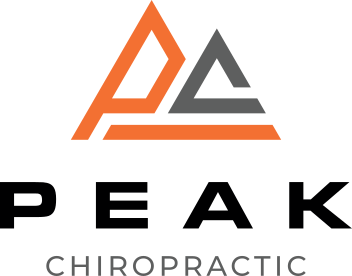When you're dealing with neck pain, you might wonder why gentle techniques could be the right choice for relief. These approaches not only minimize the risk of further injury but also foster a sense of relaxation that aggressive treatments often overlook. Techniques like soft tissue manipulation and mindful stretching can seamlessly fit into your daily life, promoting ongoing self-care. However, the effectiveness of these methods hinges on understanding how they work and what distinguishes them from more forceful treatments. What are the unique benefits you might gain by exploring this gentler path?
Understanding Neck Pain
Neck pain is a common issue that can stem from various causes, including poor posture, muscle strain, or injuries. You might find yourself experiencing discomfort after spending long hours hunched over your computer or cradling your phone between your shoulder and ear. These habits can lead to muscle tension and imbalances that contribute to neck pain.
Understanding the anatomy of your neck is crucial in grasping what you're dealing with. Your neck comprises seven cervical vertebrae, which support your head and allow for a range of motion. When these structures are stressed or misaligned, it can lead to pain, stiffness, and decreased mobility.
You might also experience referred pain that travels down to your shoulders or even headaches.
In addition to posture, factors like stress and lack of sleep play a significant role in neck pain. Stress can cause your muscles to tighten, and inadequate sleep may prevent your body from healing properly. You may notice that your pain worsens after a particularly stressful day or when you haven't slept well.
Identifying the specific cause of your neck pain is essential for effective relief. Pay attention to your daily activities and habits, as they can provide clues about what's contributing to your discomfort.
Benefits of Gentle Techniques
Finding relief from neck pain often involves exploring various techniques, and gentle methods can be particularly effective. These approaches offer a range of benefits that can enhance your overall well-being while easing discomfort. One of the most significant advantages is their low risk of injury. Unlike more aggressive treatments, gentle techniques typically pose minimal strain on your body, reducing the likelihood of exacerbating your pain.
Additionally, gentle methods often promote relaxation. When you're in a state of pain, tension builds up in your muscles, leading to further discomfort. By using gentle techniques, you can encourage your body to release this tension, allowing for a more soothing experience. This relaxation can also have a positive impact on your mental health, helping to alleviate stress and anxiety that often accompany chronic neck pain.
Another benefit is that gentle techniques can be easily integrated into your daily routine. Whether it's gentle stretches, mindful breathing, or light massages, you can practice these methods without needing specialized equipment or extensive training. This accessibility means you can take control of your pain management and make these techniques a regular part of your life.
Finally, gentle methods are often more sustainable in the long run. By making gradual progress and listening to your body, you're less likely to experience burnout or frustration. Overall, choosing gentle techniques not only addresses your neck pain but also fosters a holistic approach to health and wellness.
Common Gentle Methods
When you're looking for relief from neck pain, several gentle methods can help.
Soft tissue manipulation, gentle stretching exercises, and mindfulness techniques are effective approaches to ease discomfort.
Let's explore how each of these methods can make a difference for you.
Soft Tissue Manipulation
Soft tissue manipulation encompasses a variety of gentle techniques that can effectively alleviate neck pain. When you engage in soft tissue manipulation, you're focusing on the muscles, tendons, and fascia surrounding your neck.
Techniques like myofascial release, trigger point therapy, and gentle massage can help relieve tension and restore mobility.
Myofascial release works by applying sustained pressure to the connective tissue, allowing it to relax and release tightness. Trigger point therapy targets specific knots in the muscles that can refer pain to other areas, effectively breaking the cycle of discomfort.
Gentle massage can enhance blood flow, reduce muscle stiffness, and promote relaxation.
These techniques not only help in reducing pain but also promote overall well-being. You might find that regular soft tissue manipulation improves your posture, reduces stress, and enhances your range of motion.
Whether performed by a skilled therapist or practiced at home, incorporating these gentle methods into your routine can lead to significant neck pain relief.
Gentle Stretching Exercises
Incorporating gentle stretching exercises into your routine can complement the benefits of soft tissue manipulation and further alleviate neck pain. These stretches help improve flexibility, reduce tension, and promote better posture, all of which are essential for long-term relief.
Start with neck rolls to loosen tight muscles. Gently drop your chin to your chest, then roll your head in a circular motion, first clockwise and then counterclockwise. Aim for 5-10 repetitions in each direction.
Next, try side stretches by tilting your head towards one shoulder, holding for about 15-30 seconds, and then switching sides. This can help stretch the muscles along the sides of your neck.
Another effective stretch involves gently looking left and right, holding each position for 15-30 seconds. This helps increase mobility and reduces stiffness.
Always remember to breathe deeply and avoid any jerky movements to prevent strain.
Mindfulness and Relaxation Techniques
Finding relief from neck pain often involves more than just physical stretches; mindfulness and relaxation techniques can play an essential role in your recovery. By incorporating practices like deep breathing and meditation, you can reduce stress and tension that often exacerbate neck discomfort.
Start by setting aside a few minutes each day to focus on your breath. Inhale deeply through your nose, allowing your abdomen to expand, then exhale slowly through your mouth. This simple practice can help calm your mind and relax your body.
You can also try progressive muscle relaxation. Tense and then relax each muscle group, starting from your toes and moving up to your neck and shoulders. This technique helps you become more aware of physical tension and encourages your body to let go.
Mindfulness meditation can further enhance your healing journey. Find a quiet space, close your eyes, and concentrate on the present moment. Acknowledge any discomfort without judgment, allowing it to be part of your experience.
How Gentle Techniques Work
Gentle techniques for neck pain relief often focus on reducing tension and improving circulation in the affected areas. These methods, such as gentle stretching, massage, and myofascial release, work by targeting the muscles and soft tissues surrounding your neck. By applying light pressure or movement, you can encourage the release of tight knots and muscle spasms, promoting relaxation and flexibility.
When you engage in gentle stretching, you allow your muscles to gradually lengthen and loosen. This helps alleviate stiffness and can restore your neck's range of motion. Similarly, massage techniques enhance circulation, delivering oxygen and nutrients to the muscles while flushing out toxins. This improved blood flow not only aids in recovery but also helps reduce inflammation.
Myofascial release, another gentle technique, focuses on the fascia—the connective tissue surrounding your muscles. By working on this layer with gentle pressure, you can release restrictions that contribute to pain and discomfort. Engaging in these techniques regularly can create a cumulative effect, leading to lasting relief over time.
Moreover, gentle techniques often incorporate mindfulness and relaxation, which can further enhance their effectiveness. By focusing on your breath and being present in your body, you can reduce stress and tension, allowing your neck to relax even more.
Comparing Gentle vs. Aggressive Treatments
When evaluating treatments for neck pain, it's important to weigh the benefits of gentle techniques against more aggressive approaches. Gentle methods, like stretching, yoga, or physical therapy, focus on gradual improvement. They help you regain mobility without risking further injury.
You'll often find that these techniques promote relaxation and reduce stress, which can be essential for managing chronic pain effectively.
On the other hand, aggressive treatments, such as surgery or high-intensity manipulation, can offer quick relief but come with higher risks. While they may address severe issues, they can also lead to complications, prolonged recovery times, and even the potential for more pain.
You might feel tempted to pursue these faster solutions, especially when discomfort is intense, but it's important to reflect on the possible aftermath.
Additionally, gentle techniques usually involve a holistic approach, encouraging you to adopt healthier habits for long-term relief. This might mean incorporating regular exercise, better posture, or mindfulness practices into your daily routine.
In comparison, aggressive treatments mightn't address the underlying issues that caused your neck pain in the first place, leaving you susceptible to future problems.
Ultimately, the choice between gentle and aggressive methods should reflect your personal health goals and pain management philosophy. By evaluating the pros and cons of each approach, you can make a more informed decision that aligns with your needs and lifestyle.
Long-term Effects on Health
When you focus on gentle techniques for neck pain relief, you can experience reduced muscle tension that lasts over time.
This not only helps you feel better in the moment but also contributes to improved posture stability.
With consistent practice, these benefits can lead to a healthier overall lifestyle.
Reduced Muscle Tension
Reducing muscle tension not only brings immediate comfort but also has significant long-term benefits for your overall health.
When you adopt gentle techniques for neck pain relief, you're setting yourself up for a healthier future.
Here are three long-term effects of reduced muscle tension that you might experience:
- Enhanced Circulation: When your muscles relax, blood flow improves, delivering essential nutrients throughout your body and promoting healing.
- Lower Stress Levels: Reduced muscle tension can lead to decreased cortisol levels, helping you manage stress more effectively and improving your mental well-being.
- Improved Sleep Quality: As tension eases, you're more likely to enjoy restful sleep. Quality sleep is vital for your body to repair itself and maintain overall health.
Improved Posture Stability
Improved posture stability can greatly enhance your overall health in the long run. When you maintain good posture, you reduce the strain on your neck, back, and shoulders, allowing your body to function effectively. This stability helps align your spine, which can prevent discomfort and chronic pain from developing.
By using gentle techniques for neck pain relief, you're not just easing immediate discomfort; you're also laying the groundwork for better posture. As your neck and upper body become less tense, it becomes easier to stand and sit with proper alignment. This positive change in posture can lead to improved balance and coordination, reducing your risk of falls and injuries.
Furthermore, good posture contributes to better breathing and digestion. When your body is aligned, your organs have more room to function efficiently. You'll find that you feel more energized and focused throughout the day.
Ultimately, investing in gentle neck pain relief techniques can transform your posture stability, leading to long-term health benefits. You'll not only feel better but also enhance your quality of life. Embrace these techniques, and watch how your body responds positively over time.
Incorporating Techniques Into Daily Life
Throughout your day, incorporating gentle techniques for neck pain relief can especially enhance your comfort and overall well-being. You don't need to set aside hours for these practices; small changes can make a significant difference in how you feel.
Here are three simple techniques you can easily integrate into your daily routine:
- Mindful Stretching: Take a few moments every hour to gently stretch your neck. Tilt your head to one side, hold for a few seconds, and switch to the other side. This keeps your muscles flexible and relieves tension.
- Ergonomic Adjustments: Assess your workspace. Verify your computer screen is at eye level and your chair supports good posture. Small adjustments can prevent strain on your neck throughout your workday.
- Breathing Exercises: Incorporate deep breathing exercises into your day. When you feel tension building, take a moment to breathe deeply. Inhale through your nose, hold for a few seconds, and exhale slowly. This not only relaxes your neck but can also reduce overall stress.
Finding Professional Guidance
When dealing with persistent neck pain, seeking professional guidance can make a significant difference in your recovery. Whether it's a chiropractor, physical therapist, or massage therapist, these professionals have the training and experience to assess your condition accurately and recommend effective gentle techniques tailored to your needs.
Start by researching qualified practitioners in your area. Read reviews and ask for recommendations from friends or family to find someone you trust. Once you've narrowed down your options, schedule a consultation. This initial meeting is vital, as it allows you to discuss your symptoms, medical history, and any previous treatments you've tried. A thorough evaluation will help the professional understand the root cause of your pain.
During your sessions, be open about your discomfort and progress. This ongoing communication guarantees your treatment adapts to your changing needs.
Don't hesitate to ask questions about the techniques being used, as understanding the process can reduce anxiety and enhance your experience.
Conclusion
Incorporating gentle techniques for neck pain relief into your routine can lead to lasting benefits. By prioritizing relaxation and mindful practices, you not only ease discomfort but also cultivate a deeper connection with your body. Remember, these methods are low-risk and highly effective, making them suitable for everyone. So, embrace these gentle approaches and take a step towards a healthier, pain-free life. Your neck will thank you for it!



